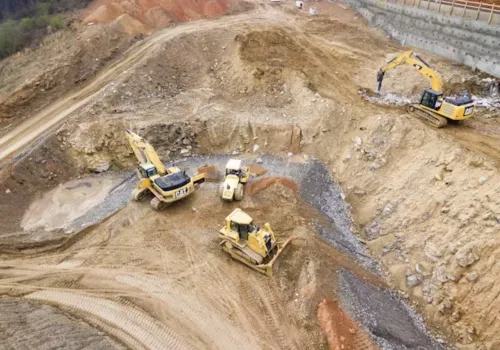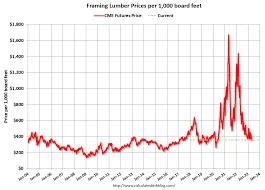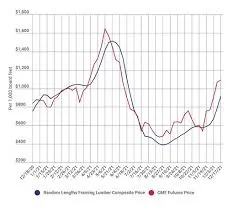
As of February 7, 2025, the week-to-week composite price for framing lumber has risen by 1.2%, marking a 13.2% increase from the same time last year. Lumber prices continue to show strength, as U.S. and Canadian markets experience continued demand across various sectors, particularly as the U.S. construction industry navigates supply chain disruptions and tariff impacts.
The National Association of Home Builders (NAHB) consistently tracks lumber prices and futures, offering insights into the behavior of the U.S. framing lumber market. Using the Random Lengths framing lumber composite price, a standard derived from high-volume production regions in both the U.S. and Canada, the NAHB provides an overview of key pricing trends. Alongside framing lumber, the report also tracks plywood price movements.
Lumber price growth in 2024 was largely driven by the 2x10 market, with certain types of lumber seeing significant increases. Specifically, Western SPF (Spruce-Pine-Fir) 2x10 was up 63.2%, and Green Douglas fir 2x10 increased by 53.6%. However, the price of 2x10 Southern Yellow Pine (SYP) declined by 3.7%.

The Department of Commerce also delayed the sixth annual review of Canadian softwood lumber duties, which was originally scheduled for February. This delay pushes back the release of updated tariff rates, currently set at 14.5%, but expected to more than double. This has placed additional pressure on North American lumber prices and continues to be a point of interest for market participants in 2025.
The lumber market is being further shaped by curtailments and mill closures in Canada, with major players like Western Forest Products Inc. and Canfor Corp. making adjustments in their operations. Western Forest Products curtailed production in British Columbia by approximately 30 million board feet in late 2024 due to weak lumber demand and rising U.S. duties on Canadian softwood lumber.
“We face the potential for the combined U.S. Softwood lumber duties rate to more than double in the second half of 2025,” said Western’s President and CEO, Steven Hofer. “It is crucial that all levels of government focus on policies that support the forestry industry and stimulate domestic investment.”
Fastmarkets/RISI estimates that sawmill curtailments have cut North American softwood lumber production capacity by 3.1 billion board feet, significantly impacting the market.
Canfor Corp., North America’s fourth-largest softwood lumber producer, closed two mills in British Columbia and curtailed production in the southern U.S. in late 2024. These moves were driven by weak lumber market conditions and the increased U.S. tariffs on Canadian softwood. The closures have resulted in an estimated loss of 670 million board feet of annual production capacity.

Lumber prices have been volatile in recent years, influenced by factors like rising tariffs, global supply-chain challenges, and insufficient domestic production. To combat high prices, the NAHB has called for several policy actions:
In addition to framing lumber, products like plywood, OSB, and other wood materials represent a significant portion of the total materials cost for new homes. According to surveys by Home Innovation Research Labs, the average new single-family home utilizes over 2,200 square feet of softwood plywood, over 6,800 square feet of OSB, and about 15,000 board feet of framing lumber.
As NAHB’s study on regulatory costs suggests, the final cost for homebuyers will increase by nearly 15% due to factors like interest on construction loans, brokers' fees, and construction margins. As a result, fluctuations in softwood lumber prices have a direct impact on home pricing, contributing to reduced affordability in the housing market.
Lumber prices typically reach builders more quickly during periods of rising prices compared to falling prices. When lumber prices surge, wholesalers tend to increase their prices immediately, passing those costs to builders. In contrast, price decreases require a longer adjustment period as suppliers work through existing inventory. The timing of this price relief is dependent on the duration and consistency of price reductions, with price relief for builders often taking weeks to months to materialize.
As detailed by NAHB's director of tax and trade policy analysis, Jesse Wade, understanding the dynamics of lumber price shifts is crucial for builders and developers seeking to navigate the complexities of the market.
As North American markets continue to contend with the effects of high tariffs, mill closures, and changing demand, lumber prices will remain a key factor in the overall costs of new homes. The NAHB continues to advocate for policies that support domestic production and reduce dependency on Canadian lumber imports, aiming to stabilize prices and improve affordability for homebuyers.
Originally reported by Jesse Wade in NAHB.